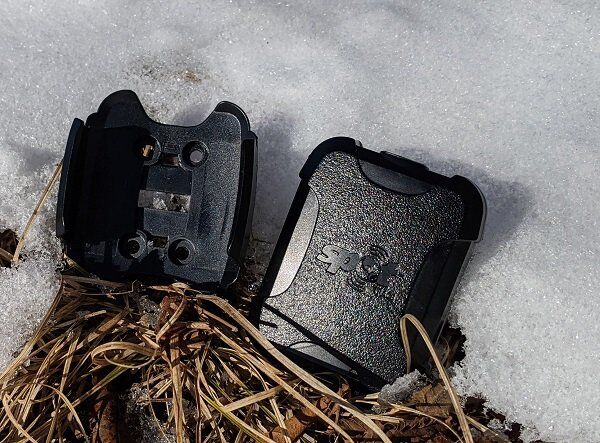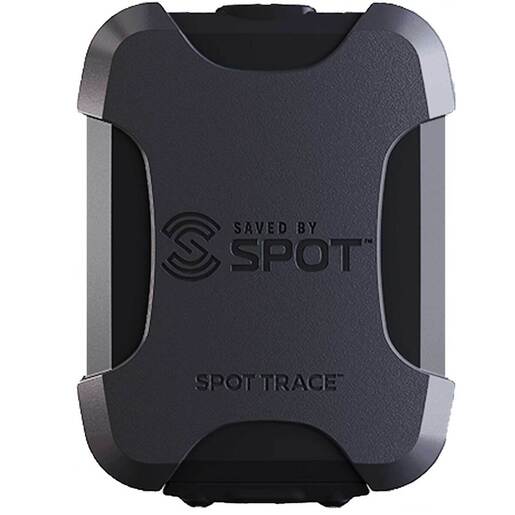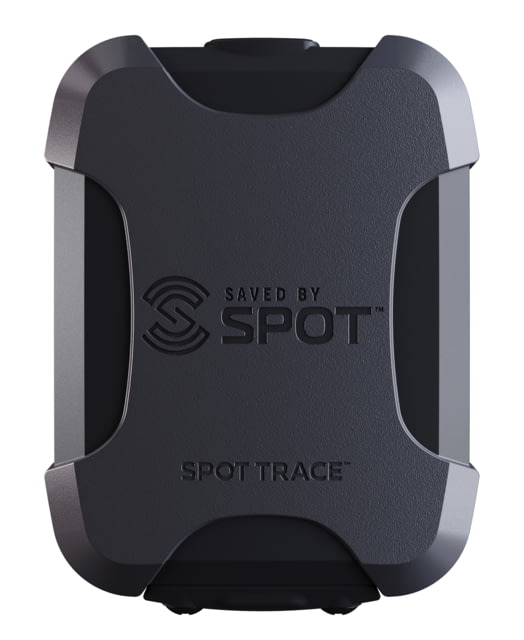SPOT Trace Review
We’re becoming more and more used to staying connected even when we’re “unplugging” by heading into nature. Cell service extends further and further every year, and the growing accessibility of satellite communication has brought connectivity, and the safety that comes with it, to essentially every point on the globe.
And joining this fleet of gadgets sending your data to space and then back down again is the SPOT Trace satellite tracker. A small, simple, nondescript black box with just one button.
SPOT Trace Anti-Theft Tracking Device
The biggest thing to point out here is that the SPOT Trace is NOT a satellite communicator like the SPOT X or Garmin inReach products. The only way to interact with it that doesn’t require a USB cable is the power button. On, or off. That’s it.
And it isn’t a mobile GPS unit like the various handheld map tools from Garmin or Suunto. There is no display, and with no ability to connect to it directly from your smartphone it’s not capable of telling you where you are, unless you’re able to access the SPOT website from your phone, at which point you don’t need the Trace to tell you where you are.
It would also make a poor option for live-tracking. It does offer location updates at 2.5 minute intervals, which is hard to fault. But those updates don’t include any of the metadata, like pace, elevation, or what have you that comes with satellite live-trackers from Garmin or Suunto.
So what IS the SPOT Trace?
What the SPOT Trace has going for it is dead simplicity. It is, by design, just a simple black box with a single button on it. That’s it. With the cover in place over the USB port it is fully IP67 waterproof, making it fully weatherproof and even capable of shrugging off (temporary) full submersion down to 30M.
That simplicity makes it durable in another way too. When I set up my SPOT Trace over two weeks ago, I selected the 2.5 minute update interval. And still, despite sending a message to space every 150 seconds for the past two weeks, I have yet to get a notification that the batteries are low, let alone dead.
And it is also small, just 2.5” x 2” x 0.75” (6.4 x 5 x 2 cm). Which means it’s compact enough to easily tuck wherever you choose to stash it.
SPOT Trace Setup, Functions, and Use
The SPOT Trace satellite tracker comes with (non-rechargeable) lithium batteries, a USB cable for setting your preferences, and a simple mounting bracket so you can affix your Trace to whatever it is you’re trying to track. And that’s it, because that’s all you need. Other than the SPOT service subscription, but more on that in a moment.

Setup is simple, a #1 Phillips gets the case open to install the batteries, and removes the port cover so you can hook the Trace up to your (Windows or Mac OS) computer to adjust your settings for update interval, as well as movement and low battery alerts. After saving the settings to your Trace, simply turn the Trace on using the single power button on the device, and give it a clear shot at the sky. You’ll see a light flash indicating power is on, as well as the signal light which flashes red while it’s searching for a signal, then green once it achieves a connection.
Once it’s connected, the Trace will ping a satellite, and update the website, with the location of the Trace at the stated interval. After the location stays the same for a time that’s selectable during setup, it will update you via email that the Trace has moved. Which makes it so that you don’t have to check the site if the Trace hasn’t moved.
SPOT Trace GPS Tracker
If the SPOT Trace isn’t about telling you where you are, or telling other people where you are, what is it? It’s about telling you where your stuff is. That’s why it comes with a mounting bracket, so you can attach it semi-permanently to your boat, your motorcycle, your trailer, or whatever other big yet-easily-misplaced toy you want to keep track of. For example-
If you’re a boater, you could put the SPOT Trace on your console. Then if a storm, or simply a poor job tying up, causes the boat to drift away while you’re away, the TRACE will not only tell you about it with it’s programmable movement notice, but it will also help you find the boat when you come to rescue it, with the current location visible from any internet-connected device.
Or maybe you leave a snowmobile or UTV parked behind your cabin in the “off season”. You can mount the SPOT Trace on (or even in, since in reviewing the Trace we found the signal will at least semi-regulalry reach through thin metal or plastic layers) your vehicle. And then you get to relax, knowing if some degenerate pulls up with a trailer to steal your ride, you’ll not only know they did but you’ll also know where they took it.
SPOT Subscription
Of course operating and maintaining (or more actually, leasing bandwidth on) a network of satellites isn’t cheap, and it isn’t a one-time investment. So to fund that SPOT does require a subscription in order for your Trace to talk to the satellites. Plans start at under $10 a month, but can go as high as $20 a month for a flexible plan that includes the most frequent update intervals. Not cheap, and since it’s comparable to the plan cost of satellite communicators or GPS units, it’s kind of hard to justify on it’s own. But that’s not how you should think about the Trace.
Because of all the things it can’t do, it doesn’t make much sense as a stand-alone product. BUT, since it’s service works on the same plan as a communicator like the SPOT X or Gen 4, it works as an add-on to the service you already have. So if you already have a satellite communicator through SPOT, you can add Trace to your plan and get the peace of mind for your motorcycle, trailer, or whatever simply for the cost of the Trace itself.
SPOT Trace Pros & Cons
Pros:
- Dead simple design with just one button
- Weatherproof and durable for outdoor use
- Compact size for easy portability and concealment
Cons:
- Not a satellite communicator or GPS unit
- Poor option for live-tracking
- Requires paid subscription for satellite connection
Overall Impression
Normally we try to be fairly objective with our ratings here at Mountain Weekly News. We tell you if we think the product is good or bad. But the SPOT Trace isn’t a normal product. It’s use-case is subjective, and how good of a product it is depends on what you’re trying to use it for. If you’re already a SPOT subscriber and you want some peace of mind when you leave your boat, bike, or snowmobile for a few days, weeks, or months, the SPOT Trace is ($99.95) an easy 5/5. But outside that kind of use-case it’s hard to imagine giving it any score, let alone a good one. It’s simply just not a product you would use unless you’re trying to keep track of your toy hauler (or whatever).
-

 The Home Depot$15.45Buy Now
The Home Depot$15.45Buy Now -

 Sportsman's Warehouse
Sportsman's Warehouse$129.00$79.00Buy Now -

 Amazon USUsed $105.00$79.95Buy Now
Amazon USUsed $105.00$79.95Buy NowAmazon.com Price: $79.95 (as of 12/17/2025 02:40 MST) Details
Product prices and availability are accurate as of the date/time indicated and are subject to change. Any price and availability information displayed on Amazon.com at the time of purchase will apply to the purchase of this product.
-
 Bass Pro Shops
Bass Pro Shops$129.99$79.98Buy Now -
 Cabela's
Cabela's$129.99$79.98Buy Now -
 REI
REI$129.95$79.99Buy Now -

 CampSaver.com$119.99Buy Now
CampSaver.com$119.99Buy Now
Related Articles:


))/2076536.json?hei=600&wid=600&%24Soc_facebook%24)
))/2076536.json?%24BPSMkt_ProductFeeds%24&extend=380,380,380,380)

The tracker works well, but there are a few inconvenients that could make it almost useless. For one, keep in mind that if you don’t have a cell phone provider from Canada or the USA, you will not be able to receive alerts on your mobile phone. It was quite disappointing to find this out after buying the unit and paying for a year’s service. You can still receive email alerts but since most of us do not check our email 24-7, time-sensitive alerts become almost useless. Their phone app is also a hit-and-miss, I installed, de-installed, and re-intalled it several times to no avail, it still doesn’t track.
You could, but I wouldn’t recommend it. The function to do that is in the device, but in practice it’s not the best tool for the job.
First there’s a question of where you put it. In a saddle bag or backpack it’s not going to get reliable signal. You could probably jury-rig a handlebar, helmet, top tube, or exterior backpack mount, but that’s up to your ingenuity.
But even then, it would not be my first pick for that application. The advantage the Trace has over, say a GPS watch, is it’s insanely long battery life. But that doesn’t really do anything for you in a cycling application. Meanwhile the watch can do other things too; fitness tracker stuff, helping the cyclist navigate, serving as a second screen for checking messages and the like. And that’s just watches, there’s also cases to be made for cycling computers, satellite communicators, etc.
It’s unclear from this review if you could just attach this to your bicycle so your partner could see where you are on a map at the set intervals.